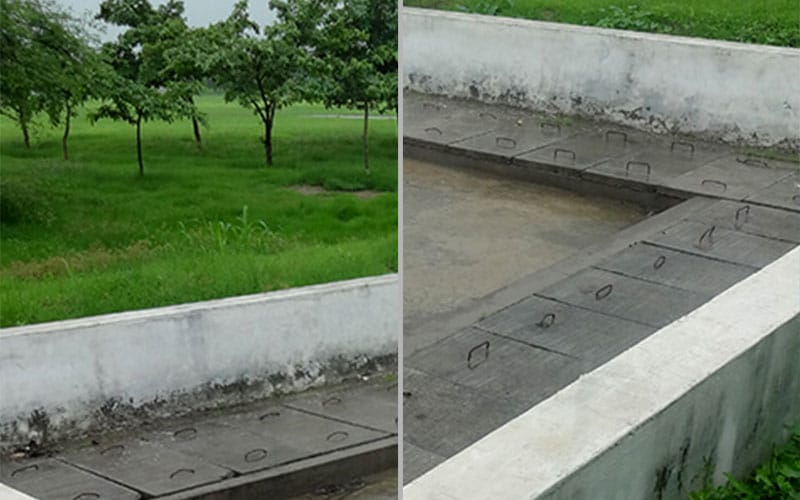Making the most of a rainy day

It is estimated that, on a rainy day, every square mile of urban land causes 80-90% of rainwater to be washed into rivers. India uses only 10-20 percent of its annual rainfall. (Ref: CPREEK.ORG) Harvesting rainwater can help recharge and replenish the groundwater system. This helps in both checking flooding and handling water shortage.

How can we use rainwater more effectively?
Rainwater harvesting has planned to be done across our campuses 100%, to replenish the groundwater table with the help of natural and artificial lakes/ponds, rooftop rainwater harvesting systems, and deep-well injection systems.

Collection tanks
Rainwater from the roof is treated and then directed into underground collection tanks. The collected water is filtered and treated in the treatment plants across our campuses before use.

Deep injection wells
Rainwater that is collected and directed deep into the ground through injection wells helps to raise the groundwater tables. We have built 370 deep-injection wells across our campuses. These have a combined recharge capacity of about 18 million liters per day.
By raising the groundwater levels, these wells not only benefit us, but also the communities residing in the areas surrounding our campuses.

Artificial lakes
To augment our water harvesting capacity, we have built 35 lakes across our campuses, with a combined storage capacity of 330 million liter of rainwater holding capacity. In addition to being a water reservoir, these lakes offer a thriving ecosystem for diverse species of fauna and aquatic vegetation.
Bridging the gap, staying relevant
In fiscal 2019-20, 14% of the freshwater requirements for one of our buildings in India was met by rainwater harvested from rooftops into collection tanks in last year 2019-20.

